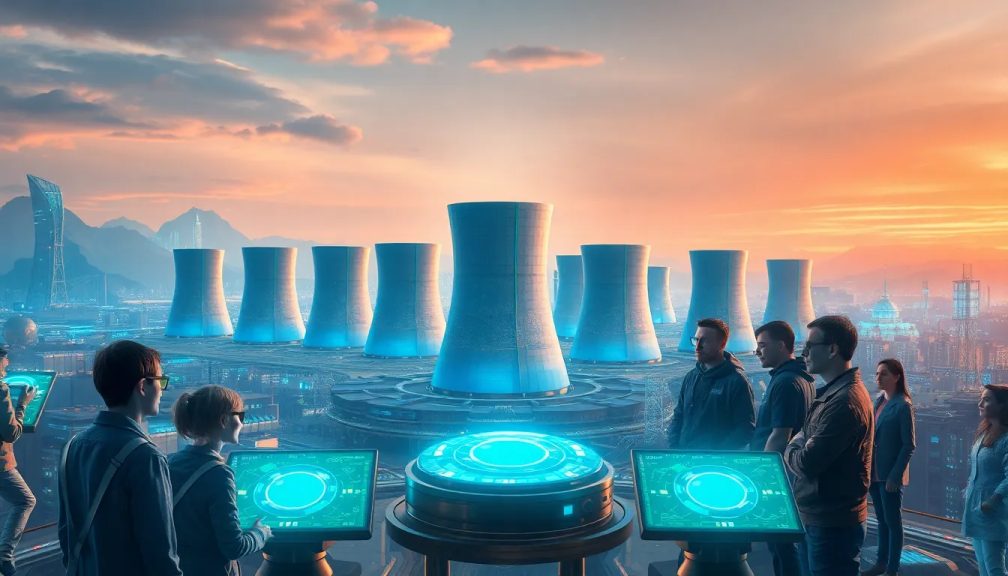OpenAI and Nvidia's $100B AI plan needs power of 10 nuclear reactors

In a groundbreaking announcement, OpenAI and Nvidia have revealed a monumental $100 billion plan aimed at accelerating artificial intelligence (AI) development. Amidst the backdrop of increasing energy demands, this ambitious project is set to reshape the landscape of AI and its reliance on power sources. As the world grapples with energy sustainability, the partnership raises crucial questions about the future of technology and its environmental impact.
Understanding the investment dynamics
Bryn Talkington, managing partner at Requisite Capital Management, shed light on the intricate financial relationship between Nvidia and OpenAI. In a statement to CNBC, he remarked, “Nvidia invests $100 billion in OpenAI, which then OpenAI turns back and gives it back to Nvidia." This circular flow of investment is seen as a potential boon for Nvidia’s CEO, Jensen Huang, highlighting the symbiotic nature of their collaboration.
This financial strategy underscores the growing trend of tech companies investing heavily in AI capabilities, recognizing its potential to transform industries. The $100 billion investment is not just a financial endeavor; it represents a strategic push to dominate the AI landscape and leverage cutting-edge technologies.
Estimating energy requirements for AI infrastructure
During an earnings call in August, Huang disclosed that constructing one gigawatt of data center capacity necessitates an investment ranging from $50 billion to $60 billion, with around $35 billion earmarked for Nvidia chips and systems. Consequently, the proposed 10-gigawatt project could entail a staggering total investment surpassing $500 billion.
This enormous financial commitment raises questions about how such energy-intensive projects will be powered. The implications are significant, especially when considering the increasing global demand for energy. As tech giants like Microsoft and Amazon explore nuclear energy options for their data centers, the industry is witnessing a shift towards sustainable energy alternatives.
- Microsoft signed a 20-year agreement to restart the Three Mile Island reactor, providing 835 megawatts.
- Amazon Web Services acquired a data center adjacent to Pennsylvania's Susquehanna nuclear plant, planning to utilize up to 960 megawatts.
- These initiatives reflect a growing trend among tech companies to secure stable and sustainable energy sources.
Nuclear energy partnerships in tech
The massive energy demands associated with AI infrastructure have prompted collaborations between leading tech companies and nuclear energy providers. As AI projects expand, traditional energy sources may not suffice, leading to innovative partnerships designed to meet the increasing power needs.
In September 2024, as part of its energy strategy, Microsoft’s decision to restart the Three Mile Island reactor underscores the potential of nuclear power in meeting future energy demands. Similarly, Amazon's acquisition of a nuclear-powered data center highlights the increasing trend of integrating nuclear energy into AI infrastructure planning.
These developments demonstrate a clear recognition of the urgent need for sustainable energy solutions as AI technologies evolve. With data centers projected to consume an astounding volume of electricity, these partnerships hold the key to balancing power supply with technological growth.
Emerging AI infrastructure projects across the US
The landscape of AI infrastructure is rapidly changing, with new projects cropping up across the United States. In July, officials in Cheyenne, Wyoming, announced plans for an AI data center with an eventual scale of 10 gigawatts—potentially consuming more electricity than all residential homes in the state combined, even during its initial phase of 1.8 gigawatts.
Such ambitious proposals raise questions about the viability of existing power grids to support such vast energy consumption. As AI infrastructure continues to expand, utilities may face significant challenges in keeping up with demand. The integration of large-scale energy projects, such as the Wyoming initiative, highlights the urgency for sustainable energy solutions.
Global energy consumption and environmental concerns
The anticipated growth in energy consumption from AI infrastructure projects poses significant environmental challenges. According to the International Energy Agency (IEA), data centers consumed approximately 1.5% of global electricity in 2024. With projections suggesting that global data center electricity demand could soar to 945 terawatt hours by 2030, the environmental ramifications are profound.
Moreover, as tech giants like OpenAI pursue expansive data center projects, they must address the sustainability of their energy sources. The environmental impact of such large-scale energy consumption cannot be overlooked, necessitating a balance between technological advancement and ecological responsibility.
- Growing electricity demand could strain existing power grids.
- Environmental impacts of increased energy consumption must be addressed.
- Sustainable energy partnerships are crucial for minimizing ecological footprints.
Future implications of the OpenAI and Nvidia partnership
As OpenAI anticipates finalizing details of its ambitious partnership with Nvidia, the implications of this collaboration extend far beyond immediate financial investments. Huang emphasized that the $100 billion investment is in addition to Nvidia's existing commitments, suggesting a broader strategy aimed at reinforcing their leading position in AI development.
With Altman's vision for mega data center deals stretching back over a year, the plans for multiple 5-gigawatt data centers highlight the increasing scale of AI infrastructure. Industry experts have warned that seven such units could consume twice the electricity of New York State combined, underscoring the gravity of these initiatives.
As the partnership unfolds, it remains to be seen how both companies will navigate the challenges associated with energy supply, environmental impact, and technological advancement. The future of AI infrastructure will undoubtedly depend on a careful equilibrium between innovation and sustainability.




Leave a Reply